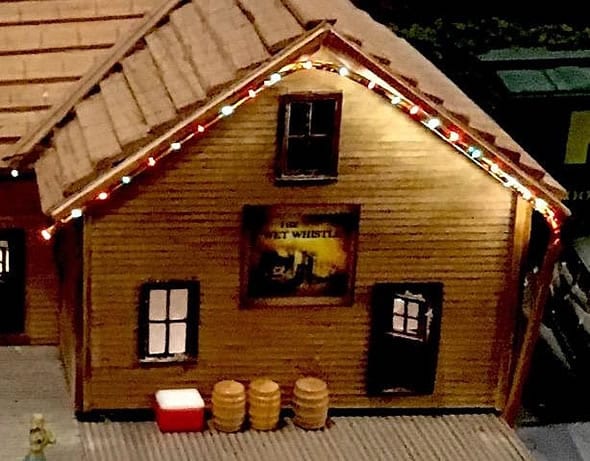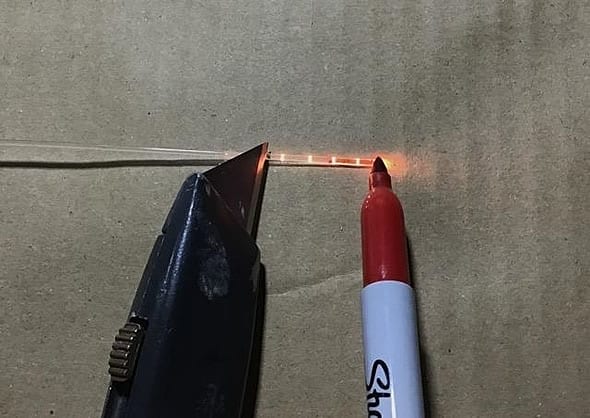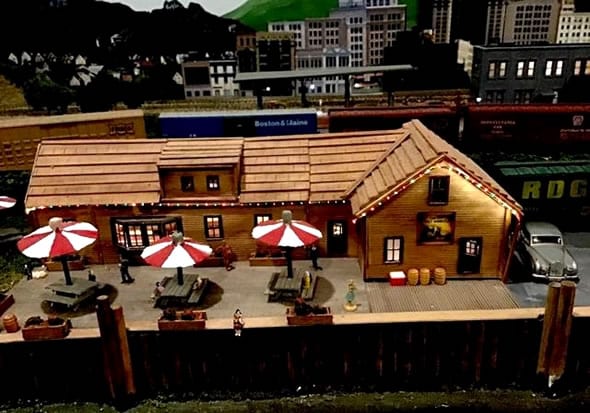Creating Christmas Scenes Using Fiber Optics
By Dr. Michael Groves, TCA#19-74373 Winter 2019

Some years back I made an English Pub for my layout, which my wife named “The Wet Whistle.” It’s been great as a focal point on a river front but I realized that with Christmas coming up it was time to give it a bit of a lift. I had already used the Lamplighter System utilizing fiber optics to light its interior. By way of background, we produce lighting based on fiber optics, with the main aim to provide ‘lighting without wiring,’ but how about some Christmas lights? I loathe putting these on my house and taking them down in the dead of winter. However, my basement is the ideal spot, so I decided, let’s do it.
My plan was to use some fiber, shape it, paint it, nick it at regular intervals to let light escape from the fiber, then paint those nicks and attach the fiber to the pub. Fibers carry light through them and can be used to light buildings, but if you cut into the fiber, a small amount of light escapes at the point of the nick. This was the important feature that would allow the Christmas lighting effect.

One of the greatest challenges I faced was getting the fiber to follow the roof line, as it wanted to follow its own course. I recently developed two new tricks – one was to straighten the fiber and the other was to provide bends in it. I insert fiber into a short piece of aluminum tube and then insert this into boiling water for about 10 seconds. The result is the fiber is then straight. By using two pieces of tubing, I was able to create a bend in the fiber to match the gable on the pub.
That being done, I painted the fiber to match the building, and using a utility knife, I cut the fiber along its length while having the fiber inserted into a Lamplighter™ box so I could immediately see the effect of each cut. A green Sharpie marker came in very handy for painting every second nick, followed by using a red one for each of the intervening nicks. It was now time to see how it looked on the pub.
I liked the effect, but decided some lighting along the straight roof line would also look great. So, once more I used boiling water to both straighten the fiber and then add a sharp bend at the end and used a piece of aluminum tube to hide the fiber in what now looks like a down spout.
The result is a more appealing pub, to which one of my customers remarked:” I like how you did it, but more than that, I’d like to be at the pub this Christmas!”

Editor’s Note: When we first received this article, we felt is was especially appropriate for inclusion in this edition. Upon further inquiry, we learned that Dr. Groves, a physicist by training, had formed Dwarvin Enterprises several years ago, to provide high intensity light sources (Lamplighter boxes), fiber and various lamps for O Gauge, as well as Narrow, HO and N scale.
With his permission, we reproduce below a video showing how he got into the toy train hobby and applied his skills in a most positive way:





